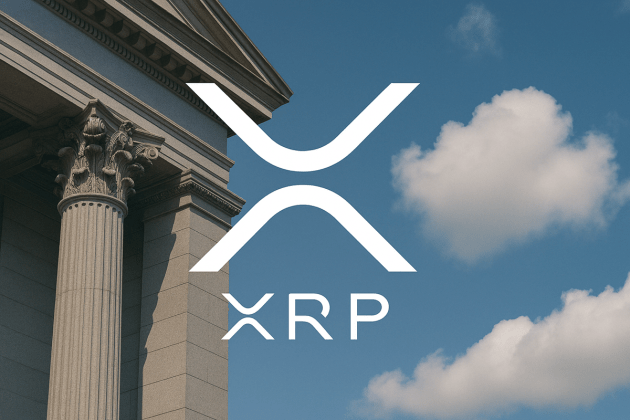The crypto market is evolving quickly. Institutional investors are now focusing on Bitcoin (BTC) and a few blue-chip tokens, and retail demand seems depressingly focused on memecoins. Public concern about startup fundraising is growing. Will the crypto market ever be as great for public backers as in 2021? How should future public fundraising in crypto look like?
Let’s take a look at the challenges of the current market with a focus on early-stage fundraising platforms, with supporting insights from Cobie and Haseeb Qureshi, along with data from Binance Research and CoinGecko.
High FDV/low-float challenges
Low-float tokens — which launch with a low percentage of the total supply — accompanied by high fully diluted valuations (FDV) have become the norm in this market cycle. Tokens are referred to as low-float if their market cap-to-FDV ratio is below 0.5, conveying that most of their supply is yet to be unlocked. Most low-float tokens are relatively new, having been launched in the last four years.
Binance Research estimates that around $155 billion worth of tokens will be unlocked from 2024 to 2030. Without a corresponding increase in buy-side demand, this substantial token supply will put significant selling pressure on the market.
On the other hand, valuations for private investors increased over time, along with projects’ interest in raising capital from private entities. Public valuations surged even more, resulting in significantly smaller returns from public markets compared to past bull cycles and today’s private returns.
This situation is highly unfavorable for retail investors. High valuations and a limited amount of tokens in circulation pose a serious concern for smaller backers, significantly restricting their access to the new promising tokens.
Here is a detailed breakdown of the problem:
Private capture and phantom pricing
As pointed out by Cobie in his analysis, in this cycle, significant price discovery happens in private markets before tokens are even available to the public. This often results in inflated valuations that don’t reflect true market demand. Teams, exchanges and market makers leverage these private valuations leaving public investors at a disadvantage.
VC and institutional dominance
Haseeb Qureshi, managing a well-known crypto VC, acknowledges that venture capitalists capture most of the early-stage gains, leaving little upside for public investors. High initial allocations to insiders create significant sell pressure once tokens unlock. With no interest from the general public, early retail backers risk becoming ‘exit liquidity’ for private investors.
High valuations and low-float trap
Many new tokens launch with high Fully Diluted Valuations (FDVs) and low circulating supply. The high FDV/low-float setup restricts liquidity and meaningful price discovery. These tokens are often ‘unbuyable’ at launch — they only become available after unlocks and subsequent sell-offs. By that time, most of these coins exhibit discouraging downward trends and have already lost the attention of potential investors.

Low-float tokens make up 21.3% of the top 300 cryptocurrencies by market capitalization. Source: CoinGecko
How early-stage fundraising platforms can lead the way
It’s not only the big-scale projects that fall short in this market. The chart below shows what percentage of all the projects launched publicly in 2021 and 2024 (till June) reach specific all-time high (ATH) range categories.

Initial DEX offering (IDO) launches of 2024 underperform compared to 2021. Data source: CryptoRank.io
Smaller projects are subject to the same high FDV and low float failures as the big-scale projects, causing them to underperform at launch and miss their main chance to gain traction. The cure? Bring crypto fundraising closer to the public. Early-stage fundraising platforms like Polkastarter can help achieve this goal. With the community and public investors having a bigger stake in the token launches, projects can expect more stable and sustainable conditions.
David Lu shared in his X post:
“I believe community members that put skin in the game should be allowed to participate in as close to terms the latest private valuation. The reason is that many of these participants may have been with the project since Day 1 as a user or contributor. So why should they not be afforded the chance to participate at the same terms as the private investor?”
We cannot agree more. If the community of the project’s early supporters is unable to get an upside, what would make them stick around? In crypto, the community is a decentralized extension of the team, the project’s most valuable asset. Why subject them to a crazy high valuation?
Crypto fundraising used to be fully public. Ethereum initiated the ‘pre-mining’ and private allocation of tokens before launch circa 2014, but only recently have we started to see the long vestings and extended private investors’ involvement.
We believe that early-stage public fundraising is the cure to the current market challenges of high FDV and low float, allowing for increased market fairness and more accurate price discovery by promoting public access to token launches.
Here’s why:
Transparent and equitable pricing
Projects and fundraising platforms should prioritize transparent pricing. Public sales and opening private rounds to the public can lead to fairer initial pricing, reflecting true market demand.
At Polkastarter, we conduct private sales for public investors and have community-driven sales in our 2025 Roadmap. Binance Research also recommends more public sales for fairer pricing, and transparency in tokenomics and unlock schedules is crucial.
Increased circulating supply at launch
Successful fundraising should encourage the release of more tokens at launch, enhancing liquidity and price discovery. Gradual unlock schedules can stabilize the market.
Realistic valuations
FDVs must align with realistic market assessments and project stages. Industry norms for acceptable FDVs and circulating supplies can standardize expectations and boost investor confidence. Valuations for public sales should range from $5-10 million pre-revenue and $10-20 million for revenue-generating startups. Polkastarter aims to bring such low FDV projects to its community.
Enhanced investor education
Fundraising protocols should educate investors on FDVs, tokenomics and vesting schedules. Clear information on token distribution and fund usage can lead to better decision-making. Educational videos and blog series on evaluating tokens are a good start for investors.
Governance and variable supply models
Early-stage fundraising protocols can implement governance mechanisms for community voting on new token issuances, aligning supply with project needs and market conditions. Moving from fixed to variable supply models can manage supply overhangs and create adaptive economic models.
Community building
Early-stage fundraising platforms help build a community of early supporters and maintain engagement through community programs. Polkastarter is soon releasing the Missions feature to set up custom onboarding and engagement campaigns for launching projects.
Are you ready for a BIG update and refresh of the Polkastarter platform?
— Polkastarter (@polkastarter) July 22, 2024
There will be Polkastarter Missions too 👀
We've created a new way for you to engage with upcoming projects and get rewarded too!
Beta access coming August 13 🔥
HYPE 👇 pic.twitter.com/SMMPXPFW93
A recent example of a more sustainable token launch approach is Lympid, an established regulatory-compliant platform in Europe to issue and trade real-world assets (RWAs), offering a neo-bank-like app for investing in tokenized assets. Within six months of tokenizing the world's first show jumping horse called Doriano, Lympid returned profits of 70% to investors.
The team is now focused on launching a public round on Polkastarter at $12 million FDV with P unlock at the token generation event (TGE).
Conclusion
Early-stage fundraising platforms can be crucial in establishing a healthier fundraising environment in crypto. With a focus on transparency, realistic valuations, equitable token distribution and enhanced investor education, launchpads can create more robust and fair opportunities for both projects and investors.
João Leite has been an active contributor to the Web3 industry since early 2017. As the Managing Partner of Polkastarter and Poolside, João brings over seven years of experience supporting and advising Web3 founders across various domains.
Disclaimer. Cointelegraph does not endorse any content or product on this page. While we aim at providing you with all important information that we could obtain in this sponsored article, readers should do their own research before taking any actions related to the company and carry full responsibility for their decisions, nor can this article be considered as investment advice.












